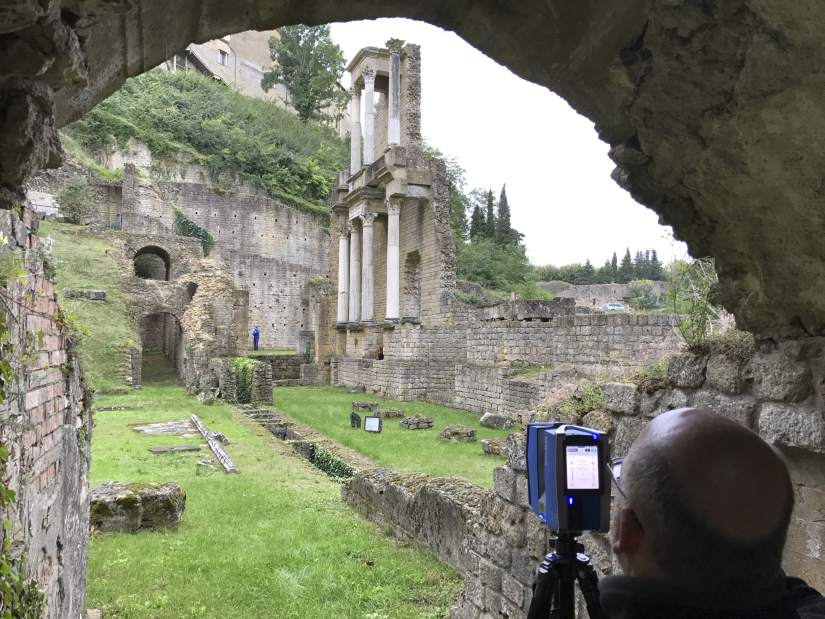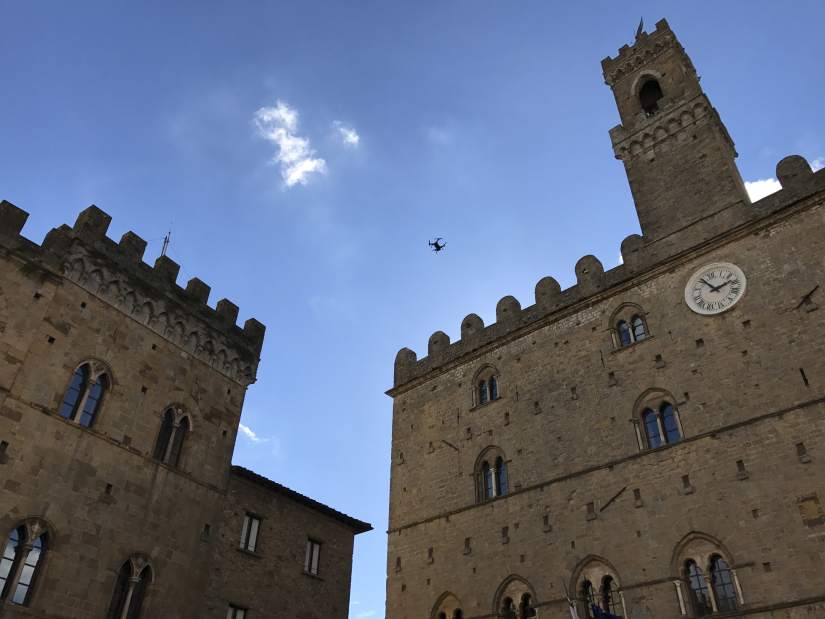Pittsburgh-area firm preserves ancient Italian city in laser light
Rich Celender stood inside an ancient Roman bath just outside the Italian city of Volterra. His LiDAR rig shot millions of laser scans at the ancient walls and ruins, collecting billions of points of data.
“It was surreal, standing within a Roman bath from 3,000 years ago,” said Celender, a vice president of civil engineering at Civil & Environmental Consultants in Robinson. “Who knows what type of history took place there, and here we are scanning it to try to preserve it.”
Last month, a team of 10 drone pilots along with 3-D design, scanning and mapping technicians — half from the Pittsburgh area — turned their attention to Volterra, a city of about 11,000 in the Tuscany region of Italy with more than 3,000 years of history. The city features a Roman Theatre dating to the first century B.C., city walls and gates from the 1200s, artwork from Tuscan painters and sculptors from the 14th to 17th centuries and an iconic bell tower dating to 1493.
Celender and two employees from his firm helped fly drones and operated LiDAR scanners, which are like radar but use lasers. Other members photographed ruins, art and sculptures for use in 3-D models.
Two employees from Car‑negie-based Case Technologies Inc. used software developed by Autodesk to stitch the photos and scans together to create 3-D models. Autodesk is headquartered in California but has a location in Bakery Square in East Liberty.
“We thought Volterra would provide an amazing place to really engage with those technologies and test them out scanning some amazing sites of historical significance,” said Mark Dietrick, director of services at Case Technologies and the man who organized the trip and brought the team together. “The city is obviously looking to preserve a lot of these significant historical sites that are deteriorating over time.”
Landslides in 2014 destroyed a portion of the city's medieval wall built in the 13th century.
Dietrick, a board member of the Volterra Detroit Foundation and graduate of University of Detroit Mercy, which runs a residential college in the Italian city, said the 3-D models help Volterra accurately rebuild if a wall tumbles or an artifact is destroyed. The team hopes to return in a few years and scan the city again, creating another set of models that can show damage or settling.
The models can allow the city to share its history with people who cannot travel to Volterra. The models will allow people to move through the walls, gates and ruins as if they were there.
“We saw it as an honor to be able to have access to the historic treasures and be able to record them,” Dietrick said.
The mayor of Volterra, Marco Buselli, hopes the models help the city make UNESCO's world heritage list.
“I think that this type of image reproduction of the city of Volterra is unique and innovative and that it could serve to preserve it and become part of the UNESCO world heritage list. We wish to obtain this, and 3-D images are something that will help us in achieving this,” the mayor told reporters from the International Business Times who were in Volterra to document the team's work.
Aaron Aupperlee is a Tribune-Review staff writer. Reach him at 412-320-7986 or aaupperlee@tribweb.com.


